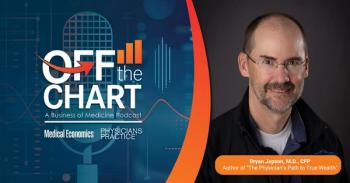
What the GAP Survey Tells Us about Work-Life Balance
The results of the 2016 Great American Physician (GAP) survey are revealing; most physicians don't have enough time for their personal life.
Time matters.
The statistics are staggering! In the 2016 Great American Physician (GAP) survey, 71 percent of physicians said that they lack adequate time for their personal life. No wonder - most doctors are working between 41 and 60 hours a week, some more than 80 hours. Over half of respondents to the GAP survey say they have a poor work-life balance.
Be on the lookout for the Great American Physician Survey report, with
Consider the costs of a work-life imbalance: Fatigue, poor health, and missing out on time with family and friends. Sixty-one percent would consider going part-time if they could, and if they could do it all over again, many respondents would select a specialty that offered better work-life balance. This was more important to them than selecting a more financially lucrative specialty. Moreover, the time-squeeze is taking its toll on physician-patient interactions. Survey respondents indicated that the greatest obstacle to strengthening their relationships with their patients is insufficient time.
Physicians are feeling the work-life balance dissatisfaction more than ever. In a national study conducted in the Journal of Graduate Medical Education, almost 50 percent of physicians, regardless of specialty and work environment, show signs of "burnout" - indicative of longer-term stress - causing a decrease in self-worth, overall happiness, and energy level. Burnout has significant implications: it not only has deleterious effects on one's own emotional well-being, it also affects interpersonal interactions (i.e., staff, patients, and family). And study after study finds that physician stress and is directly correlated with patient satisfaction and compliance with medical advice.
Feeling a loss of control over one's work environment is significantly related to physician burnout. Here are three other interrelated predictors:
• Conflict at home related to balancing home and work
• Number of hours worked
• Favoring work over home
With the majority of respondents in our survey indicating that they are married (or in a long-term relationship), having adequate time for their relationships is a critical factor in preventing physician burnout.
So what's a physician to do? Experiencing unfavorable work-life balance and its concomitant negative impact is not a foregone conclusion. There are numerous strategies, some quite innovative, that can lessen physician stress. And given that the majority of physicians like their profession and would not trade it in for another, learning to manage stress and improve work-life balance is essential. Here are some tactics to implement:
• Take time to assess your priorities and determine if your actions are aligned with your values. Consider the three main areas that deserve your attention: your work (relationships with staff, colleagues, and patients), your personal life (family and friends), and yourself (physical, emotional, spiritual and cognitive well-being).
• Track and manage your time, list your priorities, and regularly assess if you are staying true to what you value most.
• Learn to delegate and learn to say "no."
• Leave work at work and home at home. Only check emails at specific times during the day (no more than three to four times a day.)
• Give your relationship with your significant other the attention it deserves. Relationships require quality time, attention, and nurturing. Make the most of the time you have together - the leading predictor of relationship satisfaction is having a higher proportion of positive (versus negative) interactions.
• If you are in a group practice, cultivate a team approach to lessen any one physician's burden, provide mutual support and streamline the healthcare process. Focus on improving communication among providers - this will lessen stress and improve care. Find opportunities to discuss quality of care and interesting cases.
• Consider implementing a flexible schedule in the workplace. It may seem daunting, but many physician practices and healthcare organizations are trying out various options and finding out that they work.
• Assess how much of your time is spent on activities that are not physician-specific ones so that you can make more use of nonphysician healthcare providers: Free up precious physician time by using physician assistants or nurse practitioners whenever possible. Utilize medical assistants to take notes and enter data into the EHR.
• Foster a work culture that promotes physician and staff satisfaction, health, and wellness. Talk about stress and work-life balance. Make it a priority in your practice. Healthcare providers who make self-care a priority tend to have higher patient satisfaction scores, improved safety outcomes, and experience less stress. Happier patients lessen stress in the workplace because they are more cooperative, appreciative, and compliant.
• Practice "stress resiliency" behaviors, including regular exercise, a healthy diet, adequate sleep, fun and relaxation, develop and nurture supportive relationships, volunteer (acts of giving and kindness are correlated to increased happiness) and daily mindfulness exercises.
Catherine Hambley, PhD,is an organizational psychologist who leverages brain science to promote effectiveness and positive change in her work with organizations, teams, and leaders. She may be reached at
Newsletter
Optimize your practice with the Physicians Practice newsletter, offering management pearls, leadership tips, and business strategies tailored for practice administrators and physicians of any specialty.




